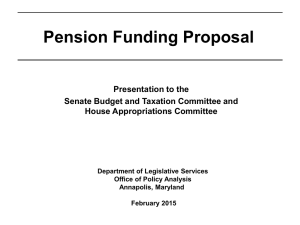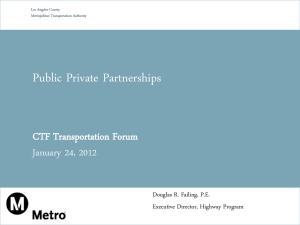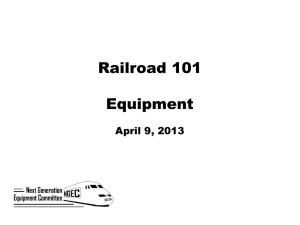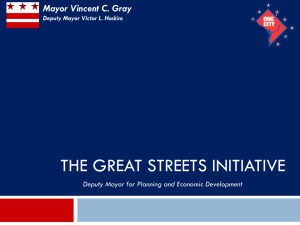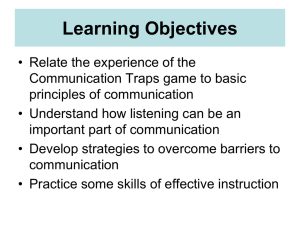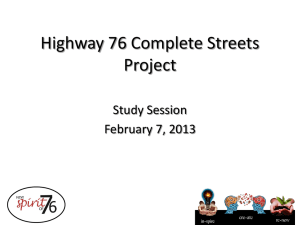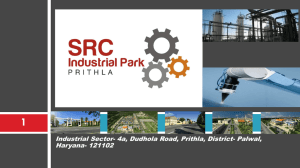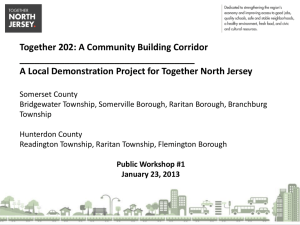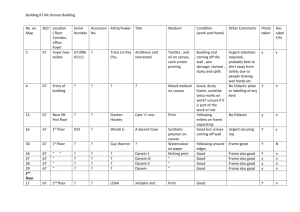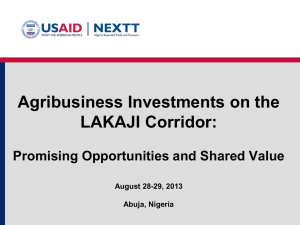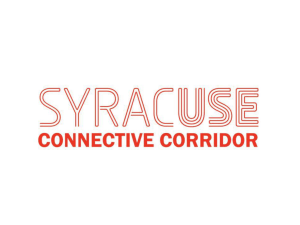ppt
advertisement
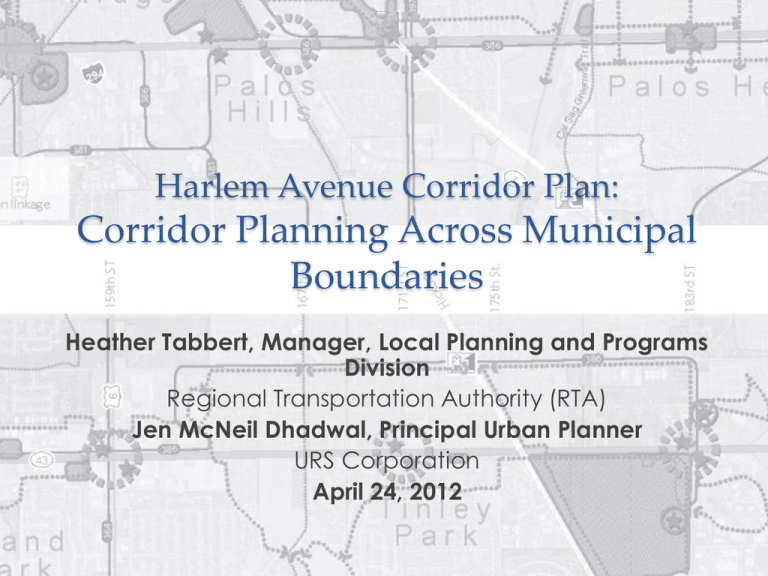
Harlem Avenue Corridor Plan: Corridor Planning Across Municipal Boundaries Heather Tabbert, Manager, Local Planning and Programs Division Regional Transportation Authority (RTA) Jen McNeil Dhadwal, Principal Urban Planner URS Corporation April 24, 2012 RTA Local and Regional Planning RTA Planning, Oversight and Funding CTA Chicago & adjacent suburbs Metra Commuter Rail Pace Suburban Bus Paratransit Vanpool RTA Local and Regional Planning McHenry Lake Cook Kane DuPage Chicago Cook Will • 8.5 million people • 3,700 square miles • 2M rides daily • 3.6 bil. passenger miles • 5,640 bus & rail cars • 381 rail stations • 334 bus routes • 7,200 route miles • 650 vanpool vehicles • $36 billion in assets RTA Local and Regional Planning TOD and Transit Improvement County Transit Plans Kane County – Randall Road County Farm Road SSMMA Cicero Avenue Funding and Technical Support: Community Planning Program • • • • • • Transit-Oriented Development Plans Transit Improvement / Corridor Plans Available since 1998 Funded over 100 planning studies Annual Call for Projects Eligibility: Local Governments and Service Boards Why Multi-Jurisdictional Planning is Important There are a LOT of jurisdictions! Chicago Area: 7 Counties 284 Municipalities 1,400 units of local government Main Players in Corridor Planning RTA Transit Service Boards IDOT Counties Cities CMAP COGS Benefits of Multi-Jurisdictional Planning • Transportation is not local • Transportation and land use coordination • Avoids piecemeal approach • Connectivity • Consistency • Common goals • Consensus building • Implementation • Limited funding Funding Availability • Nature of federal funding is changing • More competitive, less political • Focus on projects with regional focus that benefits multiple areas • Support from other agencies needed • Innovative funding solutions needed The Harlem Avenue Corridor Plan A Successful Multi-Jurisdictional Planning Project Harlem Avenue Corridor Plan A comprehensive Corridor Plan that: • Addresses mobility and accessibility, guided by Complete Streets principles • Unifies the corridor while accommodating the diversity of member communities • Achieves economic revitalization • Focuses on implementation Corridor Hot Button Issues • Issue #1 – Manage / mitigate roadway congestion • Issue #2 – Maximize redevelopment of opportunity sites • Issue #3 -- Enhance commercial development • Issue #4 -- Reinforce links to adjacent commercial districts • Issue #5 – Encourage corridor as an employment generator • Issue #6 -- Strengthen corridor and community identity Transportation Planning Traffic Management / ITS • Heavy traffic conditions at many intersections and around expressways Freight • Congestion around industrial areas throughout corridor Transportation Planning Transit • • • • Pace Service Metra Service CTA Service Arterial Bus Rapid Transit Pedestrians/Bicycles • Pedestrian Scale • Complete Sidewalks • Bicycle Facilities and Linkage to Trails Land Use and Economics Land Use / Zoning • Compatible & incompatible uses in close proximity • Safe access to/from high trip generators Economic Development • Employment corridor • Encourage growth and diversification Land Use and Economics Open Space/Recreation • Numerous existing assets o o o o Forest Preserve Local and Regional Trails Parks Golf courses • Consider stormwater management • Provide connections between corridor and recreational centers Urban Design Parking • Curb cuts at safe locations • Shared parking opportunities Design • Landscaped buffers and plantings • Integrate transportation, infrastructure and landscape • Wayfinding and signage Recommendations • Economic Development Sites • Transportation Improvement Projects • Urban Design Projects Toyota Park Redevelopment Site Bridgeview 95th Street Interchange Redesign and Redevelopment Plan Oak Lawn and Bridgeview Southwest Highway Improvements Palos Hills, Chicago Ridge and Worth 159th Street Intersection Improvements Orland Park and Tinley Park Implementation Ongoing RTA support to SWCM Corridor communities excited to move forward STP Funding availability TIGER grant applications in 2011 and 2012 for 95th Street project • Orland Park Transportation Plan • Pace: Toyota Park Transit Center • • • • www.harlemcorridor.com The Harlem Avenue Corridor Plan In Retrospect…. Themes & Lessons Learned Successes Challenges • Building upon strengths: • Dealing with differences in: o o o o Previous collaboration Common goals Strong, clear leadership Long-standing relationships Capacity Information and data Current state Internal politics and priorities o Appetite for change o o o o Capacity What did we find? How did we deal with this? • Full time staff of professionals • Part time staff / volunteers • Jacks-of-all-trades • One-on-one interviews • Tailored communication and engagement approach based on skill and ability to respond Information and Data What did we find? • Robust, in-house • Old, paper-based • Black-box, externallymanaged How did we deal with this? • Early and frequent detailed requests • One-on-one interviews and field work • Assembly of multiple sources • First draft with followup, checking • Line-in-the-sand stop to existing conditions task Current State What did we find? How did we deal with this? • Active projects and forward planning • Stalled maintenance efforts • Proposed range of ideas, with consistent end goal • Acknowledged uniqueness and successes Internal Politics and Priorities What did we find? • Different levels of capacity for public investment and spending • Collaboration and competition • Spectrum of engagement How did we deal with this? • Sought consensus on project goal and understanding of individual priorities • Explicitly stated the enhancing role of project, not superseding local control • Made recommendations within capacity and level of interest Lessons Learned • What we’d repeat: o Tailored / one-on-one communication + group work sessions throughout the project o Recognizing individual community successes o Listening before talking o Proactive engagement of technical participants o Frequent communication with client / managers o Hawkeye budget management • What we’ll plan for next time: o Variability in data o More proactive engagement of “low participators” Q &A Contact Information : Heather Tabbert, AICP Manager, Local Planning and Programs Regional Transportation Authority 312-913-3244 tabberth@rtachicago.org Jen McNeil Dhadwal, AICP Principal Planner URS Corporation 312.596.6705 jennifer.mcneil@urs.com

